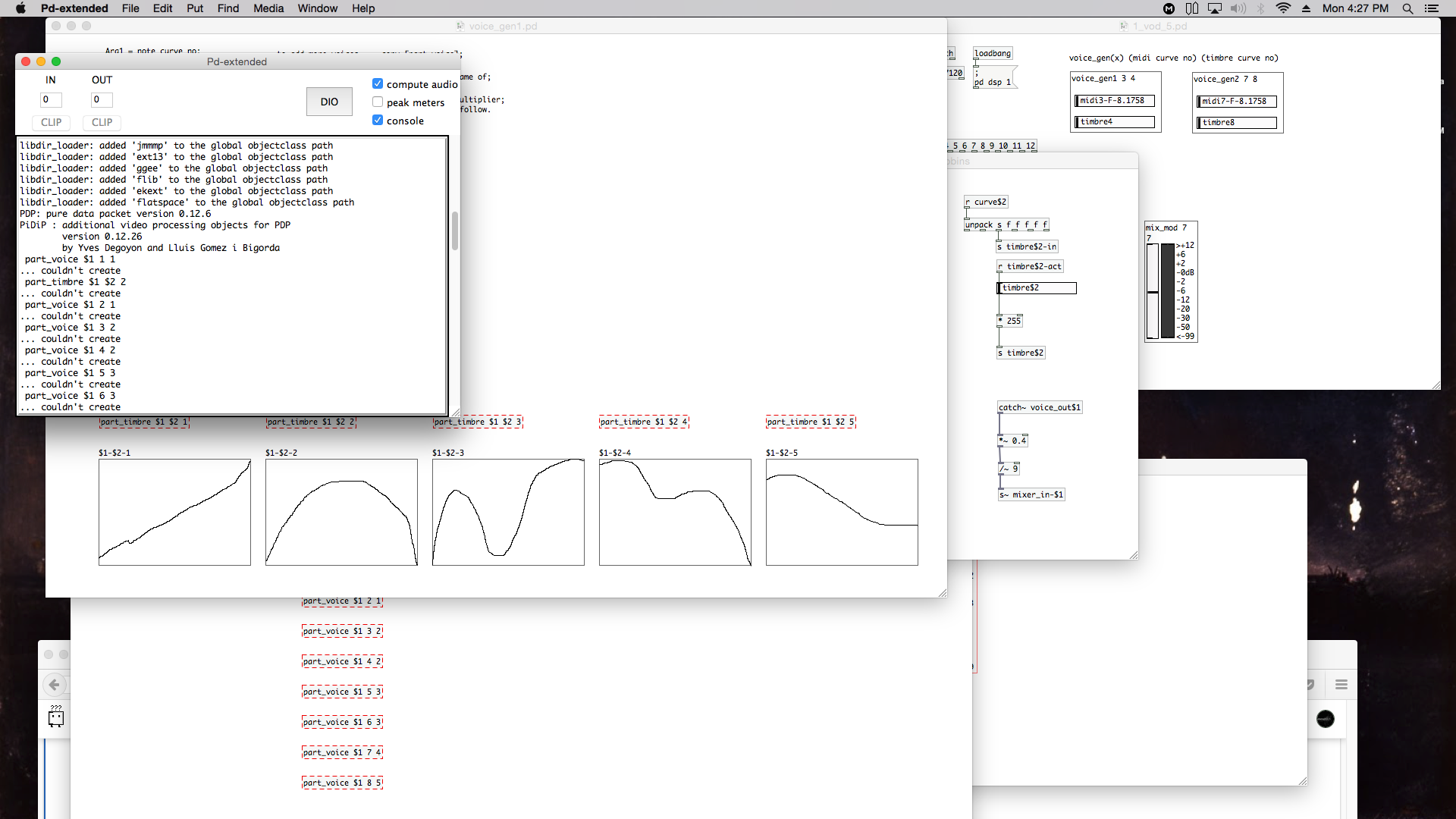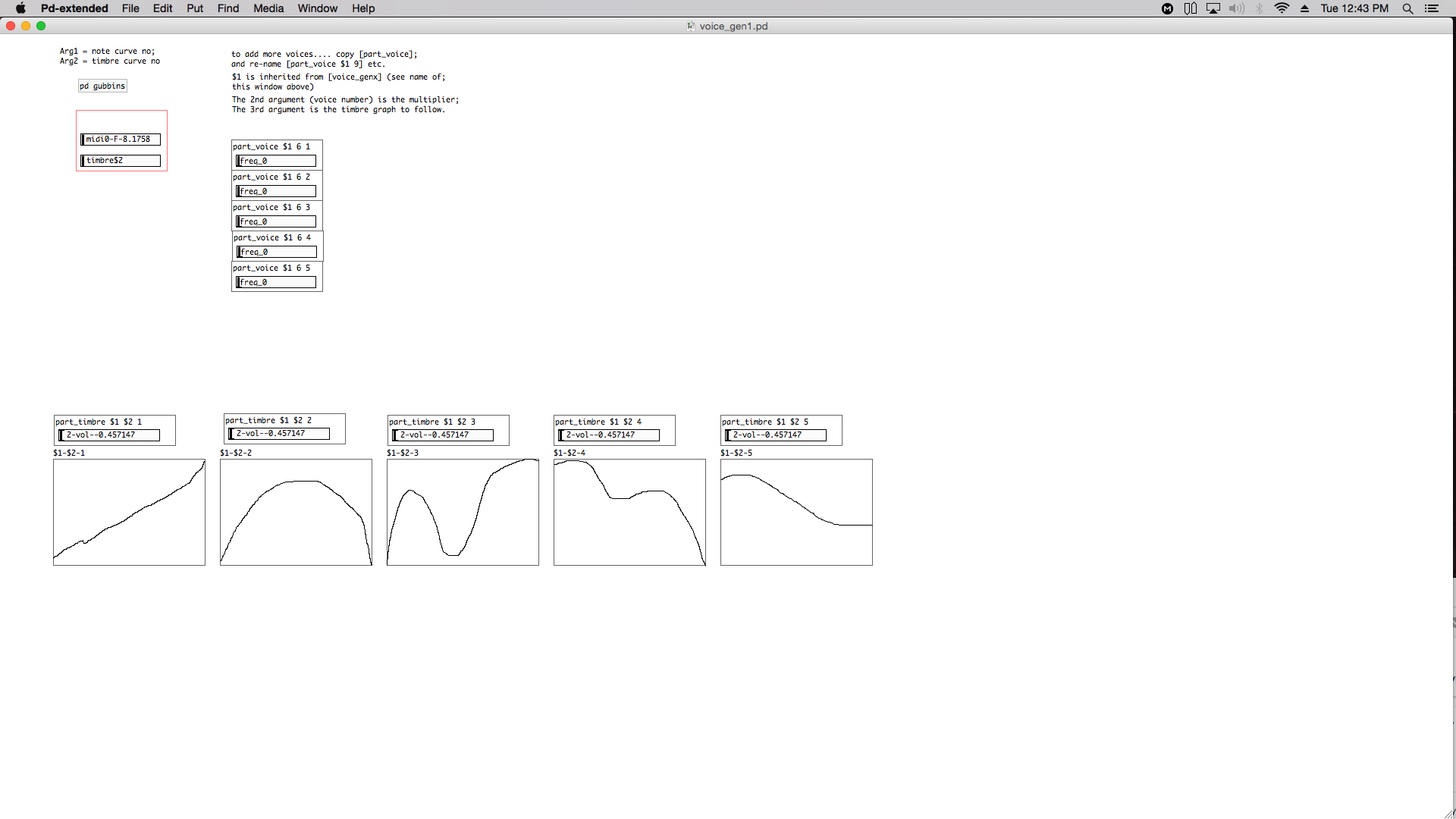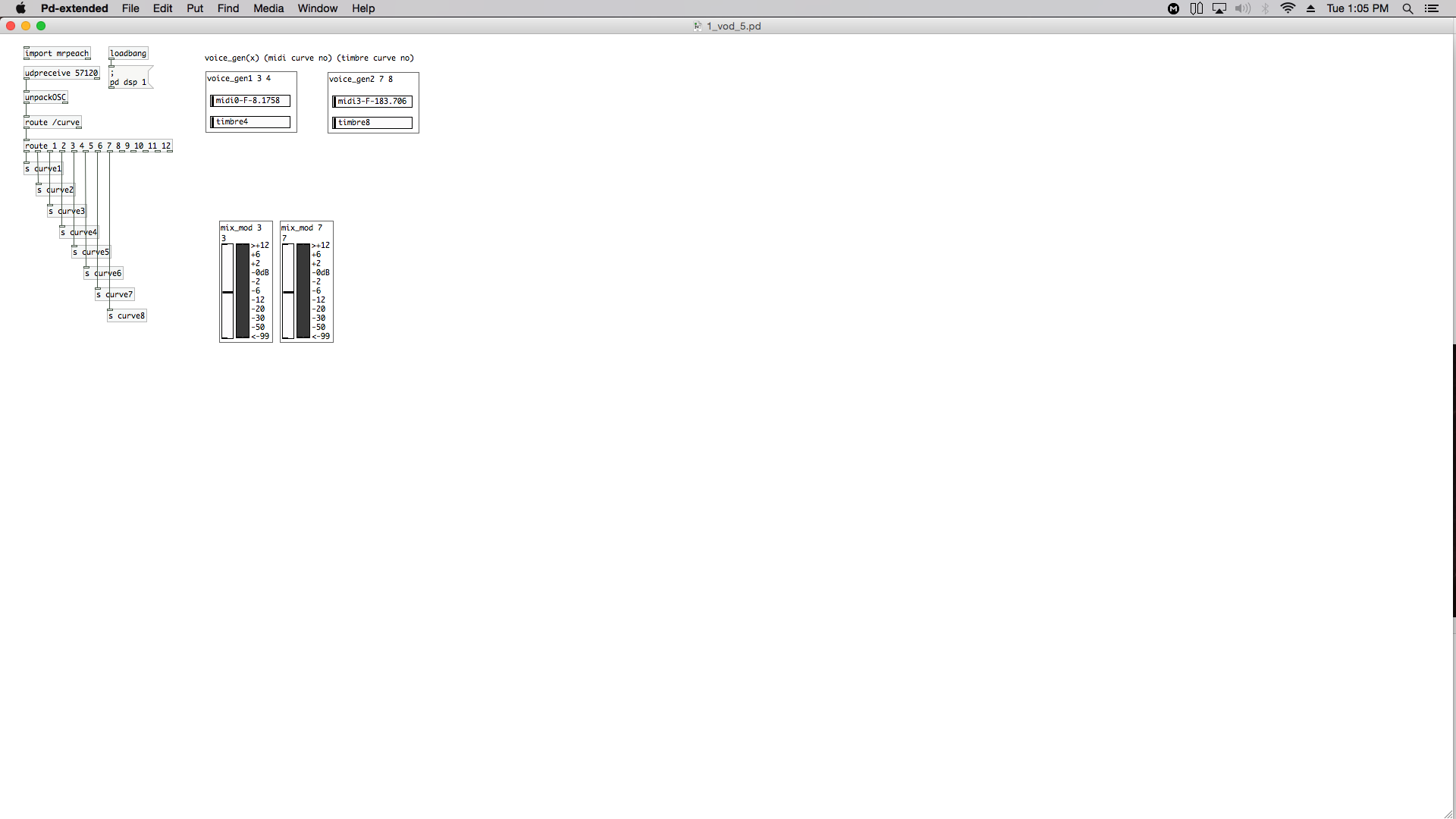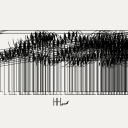@Ale-H.H. To change a graph name you have to select (highlight it) and then right click in the very top left of the graph and select properties...... you then get 2 windows..... one the same as the one you have been seeing and another (hidden below?) where you can change the array name........
Stupid system?
Back to bed!
-
Permutations, second part, can anybody get this patch to work?
-
hahah, i looked everywhere for that window where you change the name, and had to go to vanilla, and then back again
-
@whale-av right now im making new music, started a new composition in iannix, and started investigating about fourier transforms, Im very interested in this, I have some very specific sounds I want to use for my compositions, but one thing at a time! I want to fuse the way I make composition for piano with my favorite sounds, its crazy you can do anything with iannix and pd, thanks to oscillators in pd I can use in IAnnix and fuse if i wanted to microtonal music, 12-TET music, and continual music, and now composition with my favorite sounds! I love this! still in iannix i want to make huge changes,,, specially in color, and make the 3d work.
-
@whale-av Did you get the part about the number of sine waves needed? EACH morphing timbre will use 5 sine waves (the volume of the 5 sine waves will fuse and make ONE sound, these 5 sine waves are for each timbre curve, there are 31 curves for timbre so 5 times 31 is 155 sine waves...)
-
@whale-av at the beginning i was going to use 8 sine waves for timbre, then 16, then realized how much they would be and now its going to be 5 per timbre curve, just saying this for no confusions.
-
@Ale-H.H. Just back...... but off to bed soon.
This is where, if you had already had your $ variable eureka moment you would find it incredibly easy to implement.
The [part_timbre] already send their output to the sine waves ( [part_voice] ) according to their second and third arguments..... [part_timbre $1 $2 5] sends its output to [s vol-voice..curve.no-part.voice.no] (s vol-$2-$3)... so.......
We need the oscillators to know more things. At the moment they know $1 (their curve) and $2 (the number that they have been given, that gives their multiplier...... which was the same as the timbre curve controlling them)S now they need to know...
$1...... their curve for notes
$2...... their multiplier
and
$3...... the timbre curve controlling themReplace [part_voice] in your folder (before you start your patch) with this........ part_voice.pd
Open your patch and rename for example [part_voice $1 2] to [part_voice $1 2 x] where x is the timbre curve graph ($1 $2 x) controlling it.....Look inside the new [part_voice]....... all I had to do was change [r vol-$1-$2] to [r vol-$1-$3]........ simple....... the power of abstractions and $ variables.
Once you "get it" you will be able to do all this on your own....... with ease!
David. -
@Ale-H.H. An update for you....... now that we know the number of curves within a timbre will be limited.........NEW3.zip
Now each generator is separate (voice_gen1, voice_gen2 etc.) and contains it's curves. Change them and save each [voice_genx y z]
The [part_voice] abstractions have the extra argument for which timbre volume curve to follow.David.
-
@whale-av hey david, ok im reading your posts now, cant sleep haha its 4:20 am here, ill try to understand you, ill write some music as well, its going to take me a few years to develop my self in pd,
-
@whale-av Hello again David!!! so this happens...
 , Im going to ask questions that are maybe really obvious, but i have to ask them to make me understand fully...
, Im going to ask questions that are maybe really obvious, but i have to ask them to make me understand fully...
The main patch here is 1_vod_5.pd right? pdgubbins is an abstraction, part voice is also an abstraction?
Voice gen supposedly is for each voice, and its separated because each timbre curve needs 5 graphs or sine waves... -
@Ale-H.H. Hello........ sorry, I was very tired and ill and panicked, being in too much of a rush...... and I forgot to include [part_timbre] and [part_voice] in the zip. Here it is again....... NEW3.zip
Yes the main patch is 1_vod_5.pd
[pd gubbins] is a "sub-patch". It is part of 1_vod_5 and saved as part of it. It is like a window onto another room within 1_vod_5 that can be closed (hiding the contents) giving you more space to use on the main page. You will see that it does not exist on it's own..... there is no "gubbins.pd" in the folder.
If your main patch window fills up with too much stuff you could make another sub-patch. Put an object [pd whatever] and you will see a new window pop up. Cut and paste some stuff from the main patch window that you rarely want to look at into the new window..... close it..... and save the main patch. The "stuff" is still there and will behave as before (it is in the same patch) but is "hidden" unless you choose to open the window.[voice_gen1] and [voice_gen2] (( and [voice_gen3] etc. if you need more voices)) are abstractions BUT they have to be kept separate, by having different names, because of the graph data that they contain.
Yes..... if they had the same name they would be true abstractions. But if you saved one the others (copies) would change, and you would always have the same graphs in every copy.[part_voice] and [part_timbre] are true abstractions. Every copy is identical in every way...... but.... when you give the copies different arguments they will receive from different places, set their frequencies and volumes in different ways, and send their output to different places....... all controlled by those arguments.... $1, $2 etc.
David. -
@whale-av is this right?
 , the first curve I have on iannix is curve number 6 (the numbers that go before are for the time line, cursor, etc etc), curve number 6 through 36 are for pitch and 37-67 are for timbre... is this right? where would the timbre curves go?
, the first curve I have on iannix is curve number 6 (the numbers that go before are for the time line, cursor, etc etc), curve number 6 through 36 are for pitch and 37-67 are for timbre... is this right? where would the timbre curves go? -
@whale-av or should number 37 be there instead replacing the 5 sixes? but then, where would the pitch curves go?
if the first argument is for the midi curve number and the second the timbre curve, then the part voice would go like this: part_voice 1$ 6 37, aghh! I just dont know where to put the timbre curve number, is the 3rd argument for the graph or the curve? -
@whale-av

right here it would have to be from curve 6-36 right? -
@whale-av So there are the pitch curves (6-36), the timbre curves (37-67) and the 5 graphs or 5 sine waves per timbre curve,,,
if in voice gen 1 in part_voice there are 3 arguments... the first is a substitution, the second one is the voice number (6) the third is the timbre curve or graph? Im guessing there I would put timbre curve 37, shouldnt there be an extra argument to put which timbre graph to follow? or is that for the 1$? -
@whale-av or maybe just for now lets work on only one voice (6) and one timbre curve (37) plus the 5 sine waves/graphs that belong to the timbre curve so i know whats going on,,, So on Iannix I would have only 2 curves, number 6 and number 37

-
@Ale-H.H. I hope you have a Eureka moment soon..... you will be so happy!
Here as you asked for above (6 and 37.... easy to change and copy)......NEW4.zipI have incorporated the volume control so there is just one module [voice_genX] to copy/rename when you want to add voices.
I have tried to put comment notes in each bit to help you understand better.
You seem to be getting close......
David. -
@whale-av David! there is this problem, it has happened to me before, i think it has to do when the timbre stops being a sine wave and the pitch curve is at the top, when I press play it starts making these weird noises that I didnt write (at second 52 it starts normal again), and at second ten in the video the volume is interrupted, it stops and then starts again, you could appreciate this again at 7:04, at 7:24 7:48,etc etc, can this be fixed?
-
@Ale-H.H. https://twitter.com/TritonePandinus/status/870004537741856768 i cant access the video from here, but my tweet can
-
@Ale-H.H. That is strange....... I cannot think of a good reason for it. There is a click as well, and its as though the osc frequency message has gone instantly to 0 (zero)...... so a fundamental of 8 Hz.
I might be wrong....... there might still be sound there but my crappy mac laptop speakers will not produce it. It could be an overload at very low frequencies.
What does the audio look like in an editor?
Do you see one of the two faders on the module doing something you don't expect?It sounds really great apart from that!
David. -
@whale-av yeah, the frequencies start jumping, other than that it might be my soundcard and I might need a new computer lol, ill try and see if my buddy can reproduce this without any problems,


